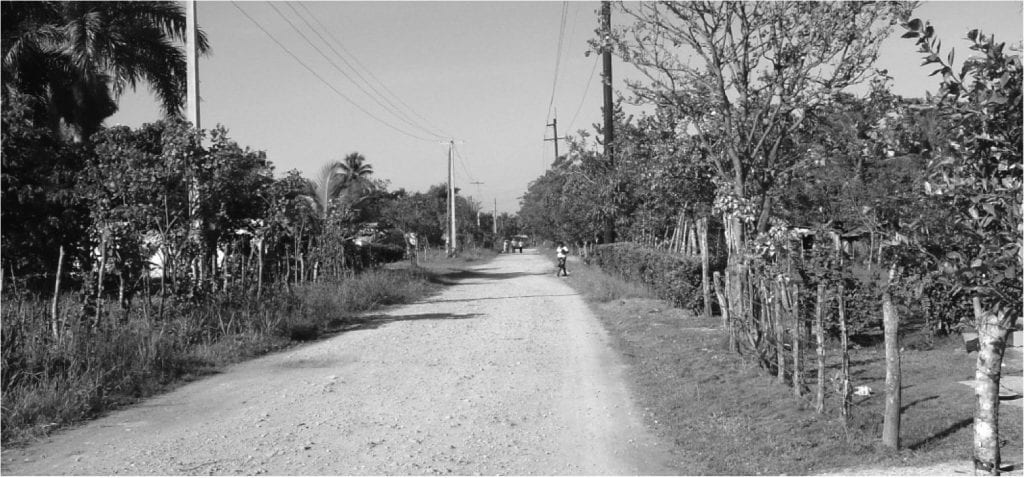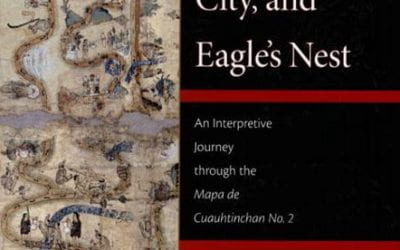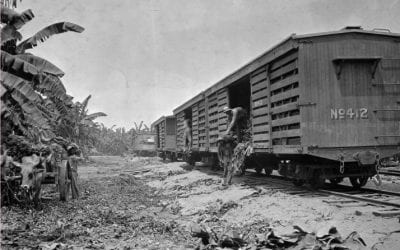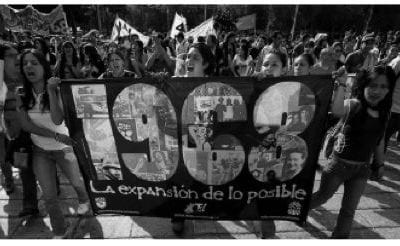The True Impact of the Peace Corps
Returning from the Dominican Republic ’03-’05

A photo of the street that ran in front of Molly Coeling’s house in el Peje de Guerra in the Dominican Republic. Photo by Molly Coeling
I am an RPCV: a Returned Peace Corps Volunteer. For me the Peace Corps was an intense life experience, above anything else. As I continue to reflect on it, I am struck with the many and varied ways in which it continues to affect my life.
As a PCV in the Dominican Republic from September 2003 to November 2005, I lived, worked, and learned in a small sugar cane-dependent community two hours outside of Santo Domingo, the capital city. As a health volunteer, I focused primarily on nutrition education and a vegetable-gardening project.
By the time I returned to the United States, I could speak Spanish fluently and understood Dominican culture, concrete skills that helped me secure the position and succeed as a Health Educator in low-income housing developments in Boston. From the first interview, I realized that success in this job with Harvard School of Public Health faculty at the Dana-Farber Cancer Institute would be the result of my experience as a PCV, building upon my formal education, which included a Master’s in Public Health.
I continue to work in the same department at Dana-Farber today, having moved into project management roles over the past three years. I now rarely use the language and cultural skills that I was hired for but have come to recognize that I learned so much more than Spanish and the basics of grassroots development. I also learned how to work within a community setting and how to see a project through from an idea to its completion. I know that actively engaging participants and maintaining morale and getting [ed:word missing here]at all levels is crucial for any project, whether it be introducing Dominican women to new ways of cooking, or continuing to reach out to groups of Americans who are marginalized by our society and at higher risk for cancer.
From the Peace Corps, I know I can not only survive but thrive anywhere, whether as an American woman in a small Dominican village or as a Midwesterner living in the Northeast. I know how to adapt, how to put things into perspective, how to take a risk, and how to maintain a sense of humor through it all. I can help a woman on the subway who doesn’t understand how to pay and can’t speak enough English to ask, and I can do so with empathy and respect. I can respond to a Dominican neighbor who insists that all Americans are rich, just as I can respond to an American neighbor who insists that immigrants should not be welcomed here. I can understand ignorance and intolerance not only as American shortcomings but as human phenomena. I can understand that people are the same; it is the circumstances that vary.
In these ways and countless others, the Peace Corps has a lasting and widespread impact on all RPCVs in their work and in their lives.
Winter 2009, Volume VIII, Number 2
Related Articles
A Review of Cave, City, and Eagle’s Nest: An Interpretive Journey through the Mapa de Cuauhtinchan No. 2
The publication of Cave, City, and Eagle’s Nest is an exceptional achievement, bringing into the light a tremendously important but formerly obscure Mesoamerican codex or pictographic text. Analogies to the (re)discovery and interpretation of the Dead Sea Scrolls are not unwarranted insofar as the book marks the reemergence of a fabulous and fabulously significant 500-year old document—the Mapa de Cuauhtinchan N…
Making A Difference: Repatriating Photographs
I first learned of the United Fruit Company’s operations in Colombia, like many people, when I read Gabriel García Márquez’s 100 Years of Solitude and its description of the 1928 massacre of banana workers in Santa Marta. A few years later, I was researching United Fruit for my dissertation, and was met with a wall of silence when I tried to contact the company to gain access to its records. Several other scholars including Philippe …
Revolution by Osmosis: A 60s Remembrance
I grew up in the peaceful paradise of Costa Rica. I can picture myself as a 13-year-old in 1960, a rebellious teenager with little self-esteem growing up in the exuberant tropical landscape surrounded by mountains, volcanoes and the sea. The big commotions of the 1960s that would shake the world did not reach us. The first tremors that heralded in the Cuban revolution, student movements, Vietnam and the feminist movement …




